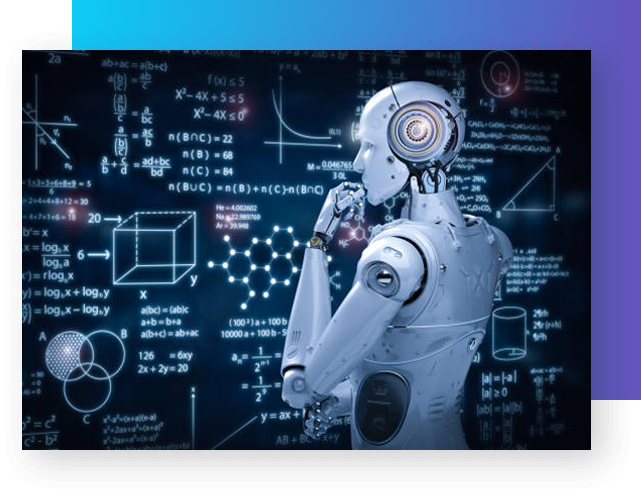Business Process Automation
In the modern business landscape, efficiency and adaptability are paramount.
Businesses are constantly seeking innovative ways to optimize workflows, reduce costs, and enhance productivity.
Business Process Automation (BPA) emerges as a solution, utilizing advanced technologies to streamline repetitive tasks and improve operational efficiency.
Among the most transformative technologies are Generative AI (Gen AI) and Robotic Process Automation (RPA), which together, are reshaping how organizations operate.
What is Business Process Automation?
Business Process Automation involves using technology to perform recurring tasks or processes, eliminating manual effort.
BPA improves accuracy, scalability, and speed across departments such as HR, finance, customer service, and IT.
Key Benefits of BPA
The Role of Gen AI in BPA
Generative AI, powered by advanced machine learning algorithms, brings a new level of intelligence to BPA.
Unlike traditional automation, Gen AI not only executes processes but also analyzes data, generates content,
and learns from patterns to provide contextual insights
Applications of Gen AI in BPA
Intelligent Content Creation
Automates report writing, email drafting, and proposal generation
Customer Support
Powers chatbots and virtual assistants to provide personalized customer experiences
Decision Support
Analyzes data and predicts trends for better decision-making.
Document Processing
Extracts insights from unstructured data like invoices, contracts, and forms
The Power of RPA in BPA
Robotic Process Automation uses software robots to mimic human actions for repetitive tasks.
It interacts with applications just like a human user, ensuring seamless execution of processes
Applications of RPA in BPA
Data Entry and Migration
Transfers data between systems with speed and accuracy
Invoice Processing
Automates accounts payable workflows
Compliance Monitoring
Ensures adherence to regulations by tracking and documenting processes
IT Operations
Manages routine IT tasks such as password resets and software installations.
Gen AI + RPA: A Game-Changing Combination
The integration of Gen AI and RPA creates a synergy that amplifies the benefits of BPA. While RPA handles structured, rule-based tasks, Gen AI tackles complex, cognitive functions.
Key Advantages of Combining Gen AI and RPA:
End-to-End Automation
Automates processes from data extraction to decision-making
Enhanced Accuracy
Reduces errors by intelligently processing data and validating outcomes.
Scalability
Adapt to changing business needs and volumes effortlessly.
Improved User Experience
Delivers personalized, AI-driven interactions
Example Use Case
In a financial institution, RPA can automate routine tasks like data collection, while Gen AI analyzes customer interactions to suggest tailored financial products, creating a seamless and intelligent customer journey.
How to Get Started with BPA, Gen AI, and RPA
Leveraging Generative AI in Robotic Process Automation (RPA)
Generative AI (Gen AI) is revolutionizing the way Robotic Process Automation (RPA) operates, enhancing efficiency, adaptability, and decision-making capabilities.
By integrating Gen AI with RPA, organizations can automate complex, unstructured tasks and unlock new possibilities for innovation and productivity.
Key Applications of Generative AI in RPA
Enhancing Data Processing
Gen AI can process and interpret unstructured data, such as emails, PDFs, and handwritten documents, enabling RPA bots to handle tasks like document classification, sentiment analysis, and content summarization
Automating Decision-Making
By analyzing historical data and generating predictive models, Gen AI empowers RPA bots to make informed decisions in real-time, such as recommending actions or optimizing workflows
Dynamic Workflow Automation
Traditional RPA requires predefined workflows. Gen AI enables bots to adapt dynamically to new scenarios by learning patterns and generating responses, making automation more resilient to changes
Conversational Interfaces
Gen AI powers intelligent chatbots and voice assistants, allowing RPA bots to engage in human-like conversations for customer service, IT support, and employee queries
Content
Generation
RPA bots integrated with Gen AI can generate emails, reports, or summaries, reducing the manual effort required for routine content creation tasks
Error Prediction and Resolution
Gen AI models can predict potential errors in automated processes and suggest resolutions, improving the reliability of RPA systems
Benefits of Combining Gen AI and RPA
- Improved Accuracy
By handling unstructured data and complex tasks, Gen AI reduces errors in automation processes. - Scalability
RPA with Gen AI can scale across diverse workflows and industries, addressing unique business needs. - Cost Savings
Automating higher-order tasks with Gen AI reduces operational costs and frees up human resources for strategic initiatives. - Enhanced Flexibility
Unlike traditional RPA, Gen AI allows bots to adapt to changing inputs and environments with minimal intervention
Industries Benefiting from Gen AI-Driven RPA
- Finance
Fraud detection, invoice processing, and regulatory compliance. - Healthcare
Patient record analysis, appointment scheduling, and medical transcription. - Retail
Personalized marketing, inventory management, and customer support. - Manufacturing
Quality control, predictive maintenance, and supply chain optimization
Conclusion
The future of business lies in intelligent automation. By integrating Generative AI and Robotic Process Automation, organizations can unlock unprecedented levels of productivity, innovation, and growth.
Whether you’re looking to optimize your workflows or transform your business model, the combination of Gen AI and RPA offers a scalable, flexible, and powerful solution.
Ready to Revolutionize Your Business?
Discover how we can help you transform challenges into opportunities with smarter, faster, and safer solutions.

